Sustainable Innovations: A Closer Look at 2050 Materials Solutions
At a time where sustainability is not just a choice but a necessity, 2050 Materials emerges as a pivotal platform in the construction industry’s journey toward a greener future. By providing comprehensive tools and data, 2050 Materials empowers construction professionals to design and build in alignment with climate targets. This article features the innovative solutions offered by the 2050 Materials platform, highlighting its features and benefits.
1. Comprehensive Digital Platform with WLCA Tools
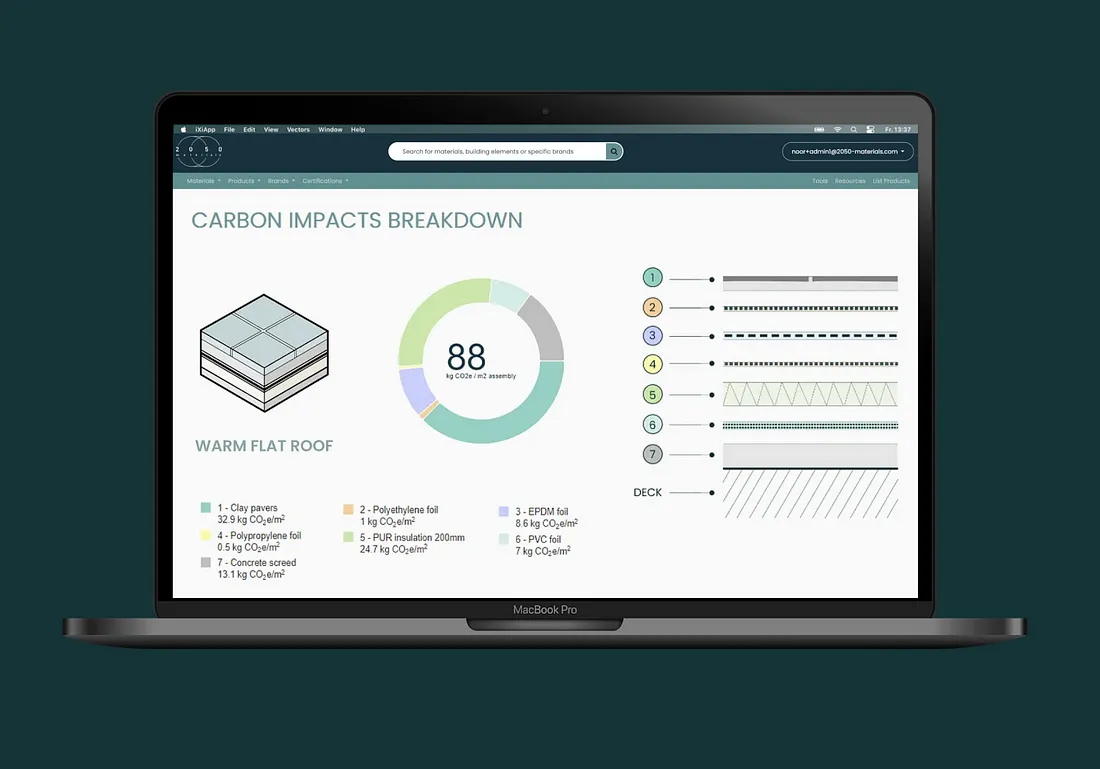
2050 Materials’ LCA tool
2050 Materials has developed a free-to-access web application that hosts the largest database of sustainability data related to construction materials. This platform is designed to support architects, quantity surveyors, and other construction professionals by offering extensive functionalities including the Whole Life Cycle Assessment (WLCA).
This feature allows users to generate carbon reports swiftly and assess their projects against industry benchmarks, aiding in achieving climate goals efficiently. Get detailed data on specific environmental metrics (GWP, biogenic carbon, water use) for A1-A3 phases per m² of assembly, with results broken down by each material selected.
The 2050 Materials team are now putting together a pilot group of sustainability and LCA specialists interested in testing a new automated mapping feature which we believe will revolutionise Life Cycle Assessments. You can register your interest here.
2. Advanced API/Database with Sustainability Data
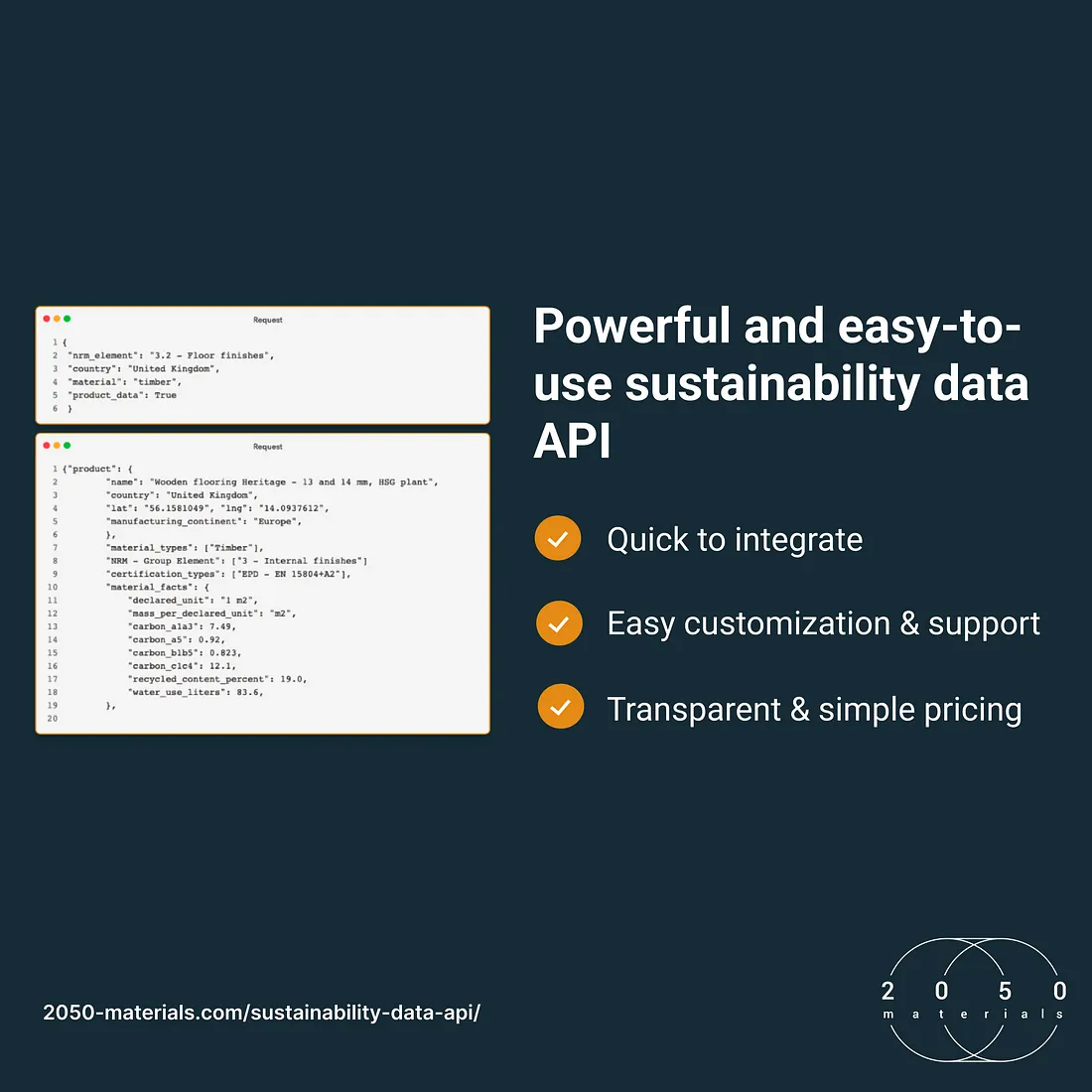
2050 Materials API
Introducing the 2050 Materials API, a powerful tool that integrates comprehensive climate data into your design and construction workflows.
The 2050 Materials API goes beyond carbon calculations, covering embodied impacts like water usage, and seamlessly integrates into your existing software. Designed for production environments, it offers powerful features for reliability and efficiency, along with advanced filtering and sorting capabilities.
Additionally, leverage open source libraries like aecdata for research and analytics projects. (Learn more about the open source library aecdata here). The 2050 Materials API enables AEC companies and others to accurately estimate a building’s environmental impact, driving sustainability from the ground up.
- Vast Data Interface: The 2050 Materials API provides access to over 150,000 products, 7,000+ materials, and more than 1 million data points, enabling detailed sustainability assessments.
- Integration with Existing Workflows: The API is designed to integrate seamlessly with the digital systems of architecture and engineering firms, enhancing their internal sustainability processes. 2050 Materials has integrated its API with many tools some of which are:
VERT WLC Tool
2050 Materials collaborated with Hawkins Brown and Fabrit in developing their RICS WLC-aligned LCA tool stands as a testament to this progress. This tool leverages the comprehensive product-level information from the 2050 Materials’ API, exemplifying the synergy between expert knowledge and advanced technology in enhancing LCA tools in the built environment. For users of the VERT WLC tool, this integration means they have access to a vast array of verified Environmental Product Declarations (EPDs) directly linked to the 2050 Materials platform. This feature enhances the user experience by providing easy access to a rich database of sustainable materials, crucial for conducting accurate and comprehensive LCAs. Read the full case study here.
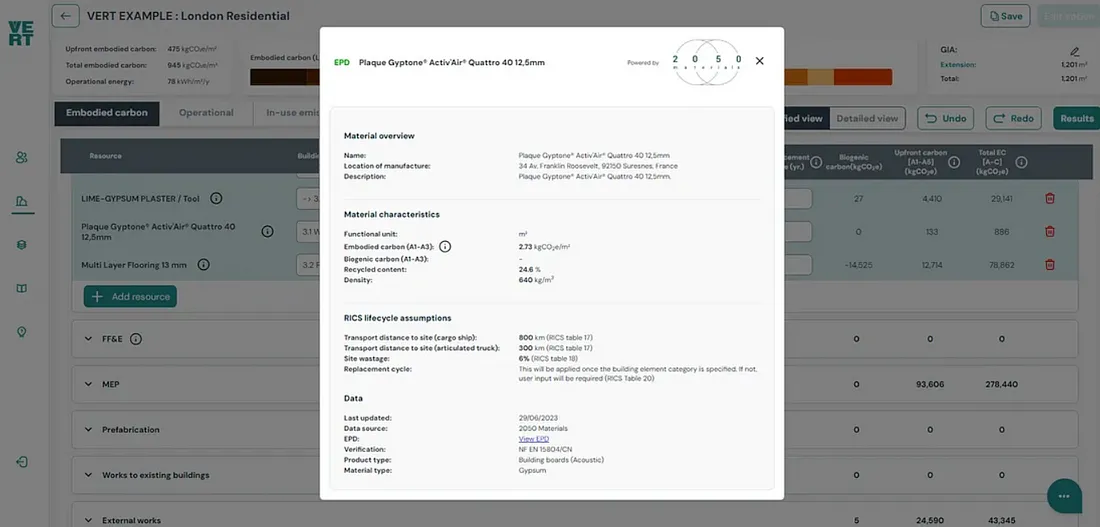
MOATA Carbon Portal
2050 Materials brings to the table an extensive database that now serves as the first Carbon Asset source in the Environmental Product Declarations (EPD) category for MCP (MOATA Carbon Portal). This categorization, enhanced by 2050 Materials’ unique product and material types, allows users to interact with the data more effectively. With this integration, users can now incorporate 2050 Materials assets into their Carbon Designs for carbon estimating, parallelly utilizing assets from other sources. This comprehensive approach enables a more accurate and holistic view of a project’s carbon footprint, right from the design phase to completion.
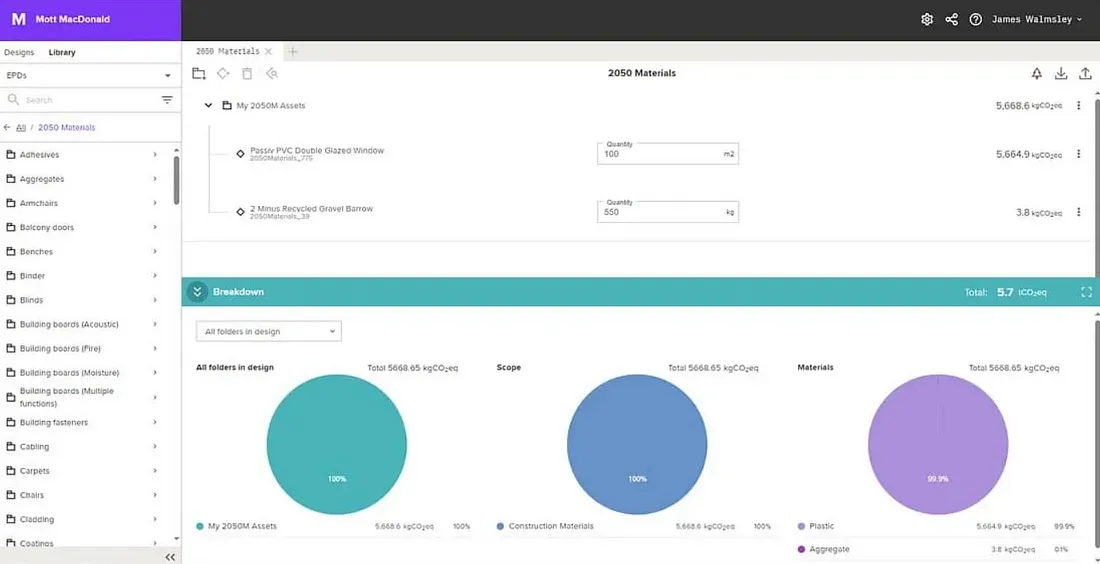
EPDs from 2050 Materials API exposed to MCP users on the left side of the tool.
RIB CostX
2050 Materials partners with CostX in a mission to empower industry professionals with the tools needed to contribute to a sustainable built environment. This strategic partnership with RIB Software integrates 2050 Materials’ carbon rate libraries into CostX’s leading cost estimation software.
Check the full case studies on all integrations done here.
- Comprehensive Impact Analysis: Beyond carbon calculations, the API covers embodied impacts such as water usage, allowing for a holistic view of a project’s environmental footprint.
- Advanced Filtering and Sorting: Users can benefit from powerful features for reliability and efficiency, making it easier to sort and filter data to meet specific project needs.
3. Access and Usability
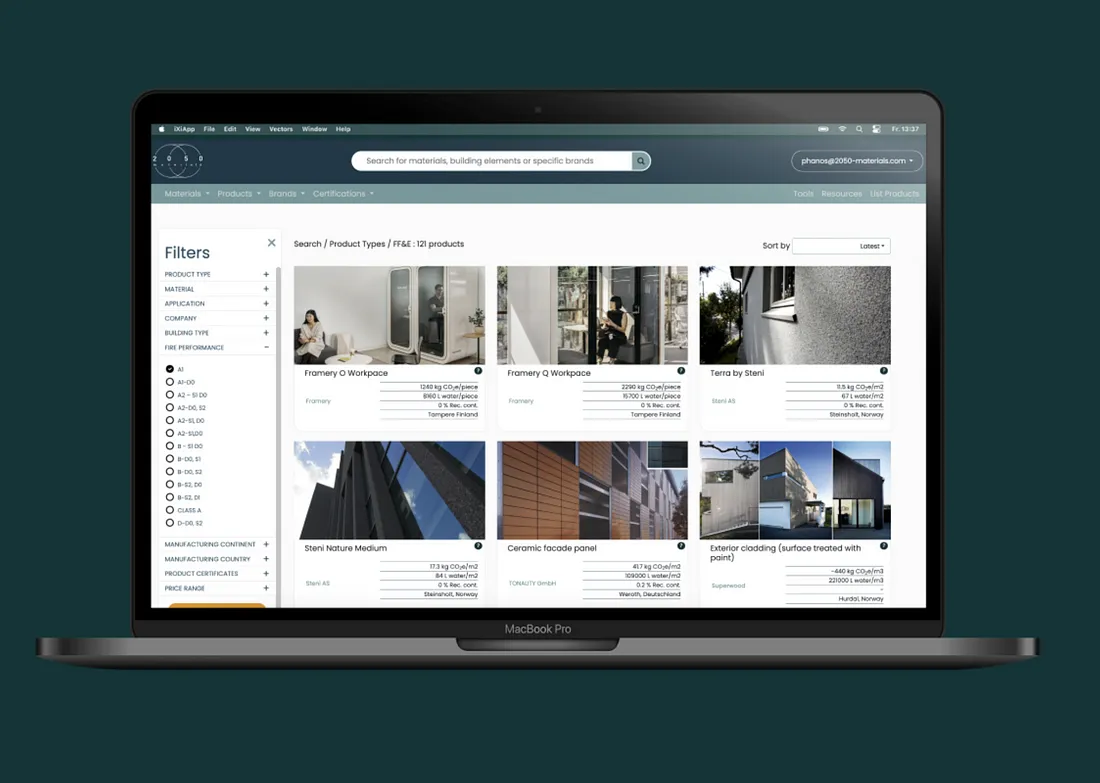
2050 Materials Platform
2050 Materials platform is designed to streamline your access to sustainable building materials and tools. The platform offers a comprehensive suite of features tailored to enhance your decision-making process and promote sustainable construction practices. Explore the following key functionalities:
- Product Library: Registering on the platform grants access to a library of over 150,000 products products populated with sustainability data from Environmental Product Declarations (EPDs) and other certifications.
- Comparison Feature: An easy-to-use comparison feature allows for objective evaluation of product sustainability including water usage, carbon emissions, full material facts (including total CO2e, biogenic CO2e, manufacturing (A1-A3), end of Life (C1, C3, C4), circularity / recyclability…), technical specifications, certifications & data sheets
- Embodied Carbon Optimizer Tool: Designed to aid in generating accurate carbon reports and optimizing material selection for minimal environmental impact.
- Easy Unit Conversion: Simplifies the process of converting units, making the platform user-friendly and efficient.
2050 Materials on ADDD Marketplace
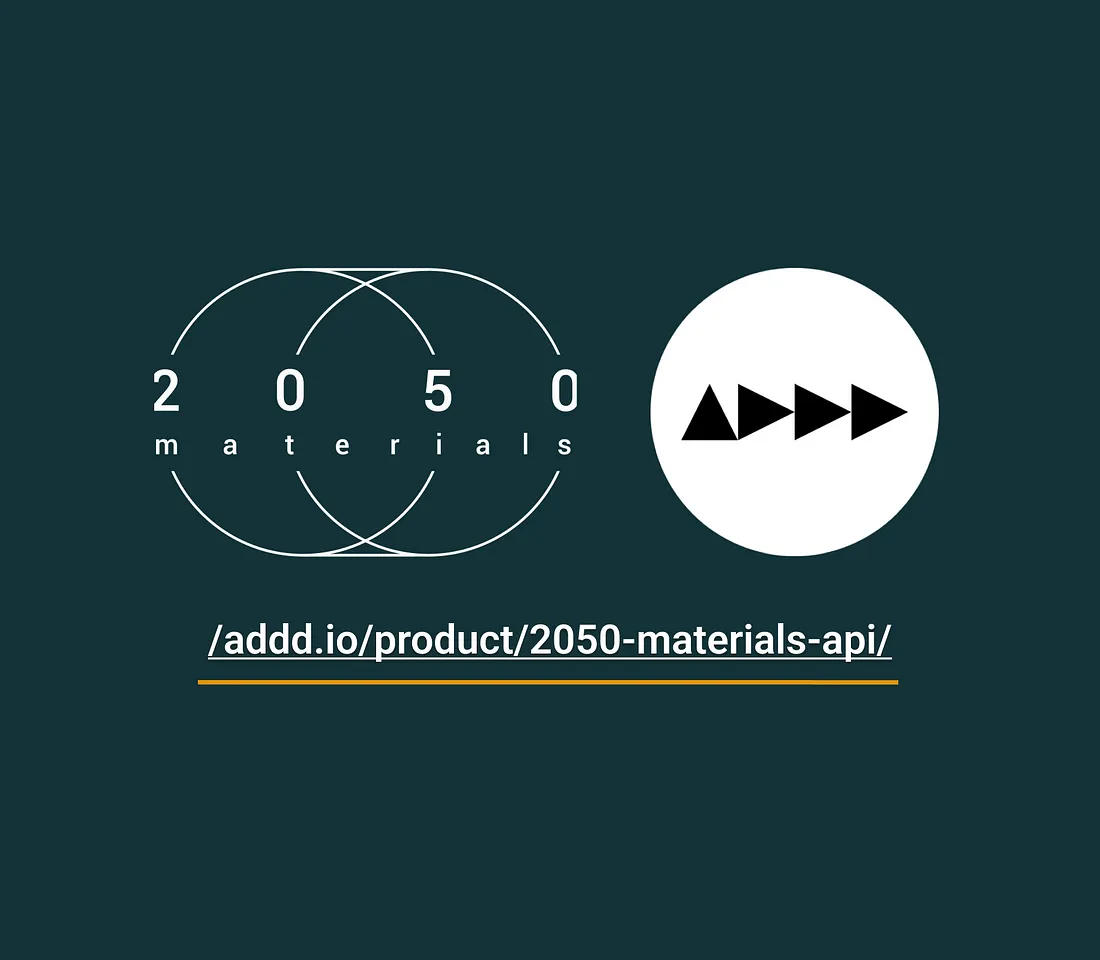
At 2050 Materials, the mission is clear: to support the construction industry in its transition to sustainable practices. The platform’s extensive data and advanced tools provide the foundation for informed decision-making from the early design stages, driving sustainability from the ground up.
2050 Materials listed its platform on the ADDD Marketplace to help increase visibility and reach a wider audience in the AEC sector.
To explore the 2050 Materials platform and see how it can benefit your projects, visit 2050 Materials on the ADDD Marketplace or access the platform directly at app.2050-materials.com.
Embracing Sustainable Innovation with 2050 Materials
In conclusion, 2050 Materials stands at the forefront of sustainable construction, offering innovative solutions that enable the industry to meet its climate targets effectively. The platform’s commitment to providing comprehensive data and tools ensures that every construction professional can contribute to building a greener future.
For further information, reach out to the 2050 Materials team via email at info@2050-materials.com or connect with them on social media @2050Materials.
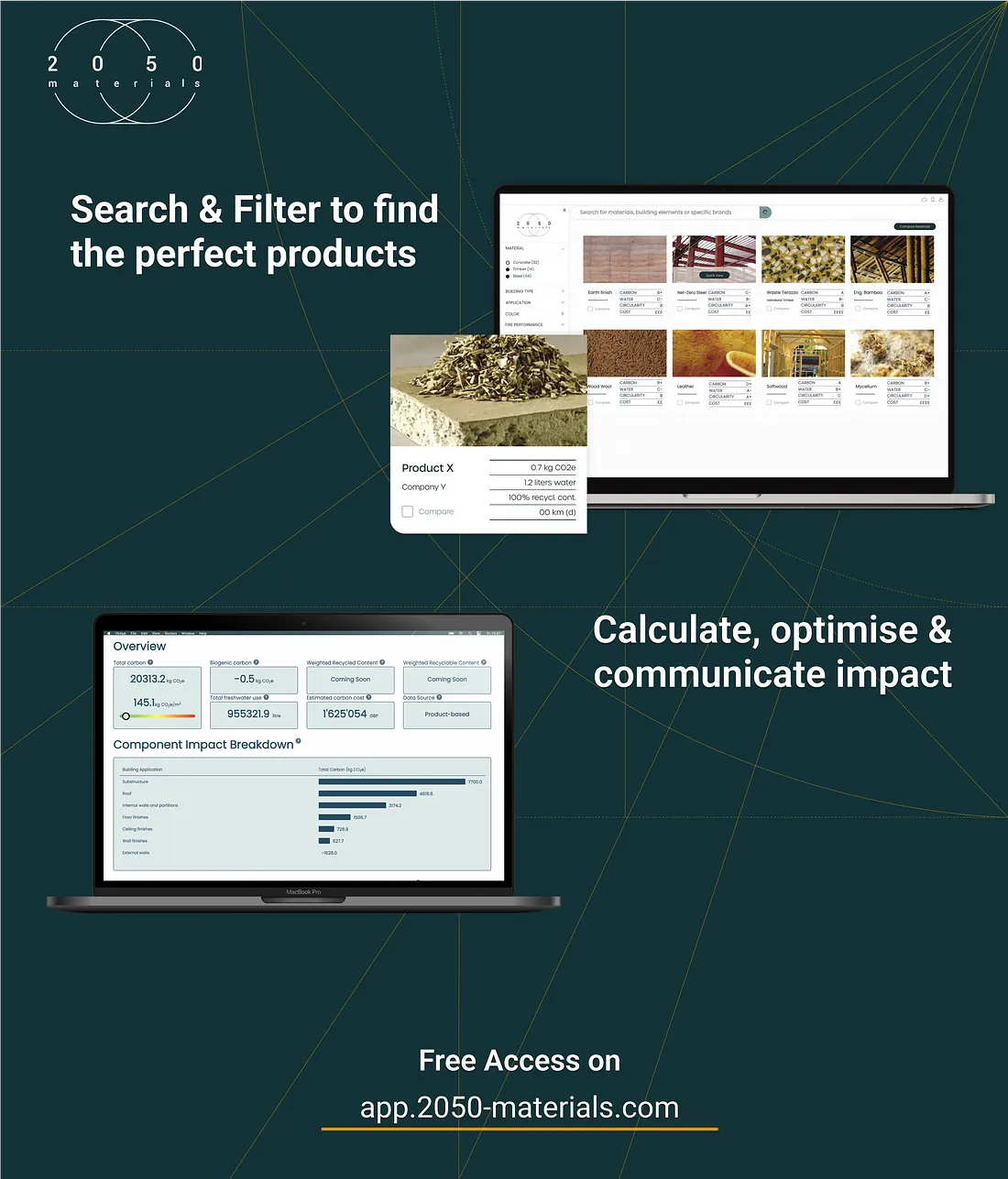
Visit the 2050 Materials Platform and Start Your Journey to Sustainable Construction
Related articles

Climate-Resilient Materials for the Built Environment: A Data-Centred Prime
As climate volatility intensifies, resilience metrics are fast becoming as critical as carbon data in material selection. This article outlines why adaptation is now a design imperative, how materials can be evaluated through a systems lens, and what KPIs project teams should demand. From self-healing concrete to fire-rated façades, we present a structured taxonomy of resilient materials, explain how to embed this intelligence into digital design workflows, and propose next steps for specification, benchmarking, and procurement.
Read more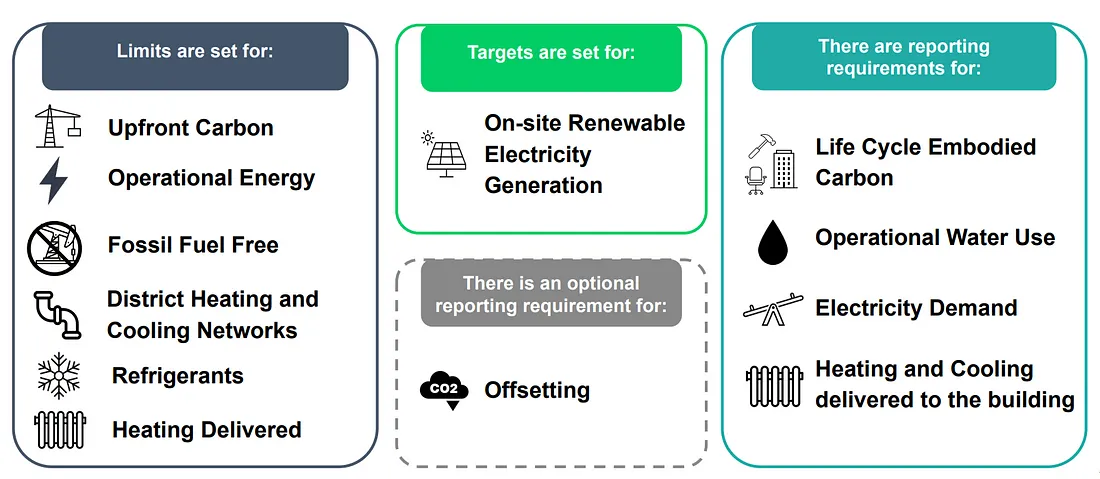
The Release of the Pilot Version of the UK Net Zero Carbon Buildings Standard
In September 2024, the Pilot Version of the UK Net Zero Carbon Buildings Standard (NZCBS) was launched, marking a significant milestone in the decarbonisation of the UK’s built environment.
Read more
Research Deep Dive - Health Impacts of Quartz Products and Engineered Stone
This article dives into the health risks associated with crystalline silica in quartz and engineered stone, recent findings in the industry, and safer alternatives available for those looking to minimize health risks without sacrificing quality or aesthetics.
Read more